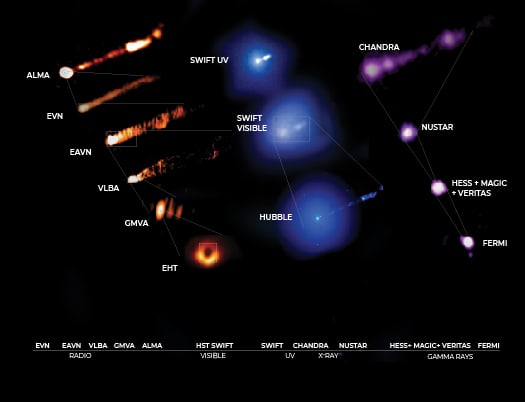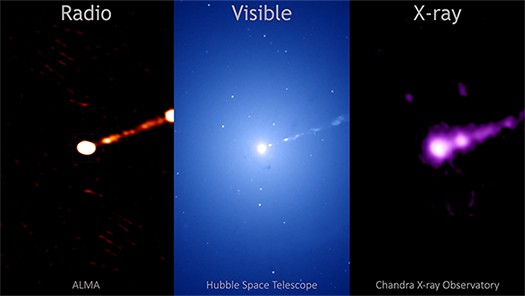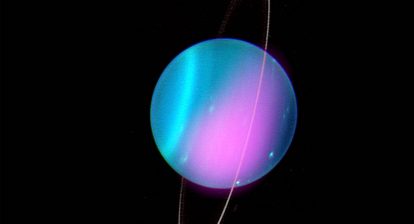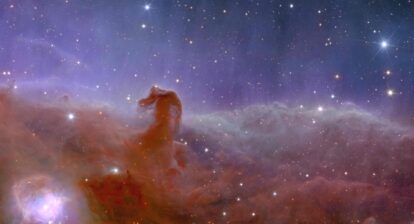Our first ever view of what a black hole looked like was in April 2019, when a direct image of a supermassive black hole and its vicinity was revealed through observations made by the Event Horizon Telescope Collaboration (EHT). This super-massive black hole is 6.5 billion-solar-masses and lives at the centre of a supergiant galaxy called Messier 87 (55 million-light-years away from Earth), of the Virgo Galaxy Cluster. That image confirmed scientists’ predictions of black holes and their event horizons. Then in September 2020, a new comparison of that image with earlier Event Horizon Telescope data showed that the brightest spot of the ring around the black hole changes — seeming to “wobble”, as the scientists put it.
That was just the beginning. On April 14, 2021, the EHT team released new data from 19 observatories from across the world, which according to them “promises to give unparalleled insight into this black hole and its system”. The observations were made from the end of March to the middle of April 2017 and this new collaboration has released unprecedented images of the black hole at the centre of M87.
The famous supermassive black hole is powering jets that travel almost at the speed of light across vast distances. And these jets produce light in the whole electromagnetic spectrum – from visible light to radio waves and even gamma rays. The intensity of this light varies across the spectrum and gives a different pattern for each black hole. The identification and understanding of this pattern can reveal the black hole’s properties, such as its spin and energy output. However, this pattern is difficult to pin down because it changes with time. The scientists overcame this by coordinating observations made by a number of the world’s most powerful telescopes – both on the ground and in space. This enabled them to collect light from across the spectrum, each giving different information about the behaviour and impact of this supermassive black hole. This is “the largest simultaneous observing campaign ever undertaken on a supermassive black hole with jets”.

Black hole at the centre of galaxy M87 in multiple wavelengths
According to the study, initial results indicate that “the intensity of electromagnetic radiation produced by material around M87’s supermassive black hole was the lowest that had ever been seen. This produced ideal conditions for studying the black hole, from regions close to the event horizon out to tens of thousands of light-years”.
This combination of data is expected to assist scientists in further understanding the nature of black holes and their event horizons, as well as improving tests of Einstein’s Theory of Relativity. It can help answer questions regarding “the material rotating around the black hole and being blasted away in jets, in particular the properties that determine the emitted light”.
The study also looked at the origin of energetic particles called “cosmic rays”. These particles from outer space continuously bombard our planet with extremely high energies. The huge jets emitted by black holes – like the ones in the image above – are thought to be the most likely source of the highest energy cosmic rays. However, there are still many question regarding them, especially the precise locations where the particles get accelerated. According to the press release “because cosmic rays produce light via their collisions, the highest-energy gamma rays can pinpoint this location, and the new study indicates that these gamma-rays are likely not produced near the event horizon”, at least as per these observations made in 2017. Further datasets will provide more insight into this debate.
“Understanding the particle acceleration is really central to our understanding of both the EHT image as well as the jets, in all their ‘colors’,” said co-author Sera Markoff, from the University of Amsterdam. “These jets manage to transport energy released by the black hole out to scales larger than the host galaxy, like a huge power cord. Our results will help us calculate the amount of power carried, and the effect the black hole’s jets have on its environment.”
A new video was also released that takes viewers on a journey through the data from each telescope, revealing images in different wavelengths of light and of physical size.
The EHT team are continuing their observations in 2021, targeting the supermassive black hole in M87 again, as well as the one in our own Galaxy (called Sagittarius A*), together with several more distant black holes for six nights.







